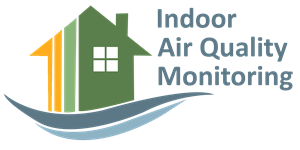Carbon dioxide
Carbon dioxide is produced in an indoor environment by either combustion of organic matter or by respiration processes of living aerobic organisms. In office buildings, human respiration is the biggest source of carbon dioxide.
Carbon Dioxide causes drowsiness, increased blood pressure and pulse rate. It also causes reduced hearing. It stimulates the respiratory center causing dizziness, confusion, difficulty in breathing, sweating, dim vision, tremor and loss of consciousness after exposure for between five to ten minutes.
PM 2.5 and PM 10
PM 2.5 and PM 10 are a mixture of solids and liquid droplets floating in the air. These particles are less than or equal to 10 micrometers and can easily get into the lungs. Causing respiratory disorders, these particles settle in the form of dust and cause loss of data and money.
Ammonia is a colorless gas with a sharp odor which is directly linked to sick building syndrome (SBS) that renders work environment unsafe for employees.

18 Point IAQ Safety Compliance Checklist
Relative humidity
Major sources of indoor humidity are outside air which brings in water vapors, leaking pipelines or open water sources which evaporate on heating and indoor plants. Elevated relative humidity can promote the growth of mold, bacteria, and dust mites, which can aggravate allergies and asthma. Usually, relative humidity should periodically be monitored with a moisture sensor.
Temperature
Indoor heat is generated by all the electrical appliances inside a building. Major sources of heat include computer systems, HVAC systems, internal heat radiation due to heating up of objects, server rooms and humans themselves. The temperature in different seasons must be maintained according to provide comfort to the occupants and healthy indoor environment.

5 ways to Improve Indoor Air Quality
Volatile Organic Compounds
Major VOC sources in buildings include furnishings, construction materials, maintenance and infiltration of external contaminants.
The occupants whose workstations are beside the new furniture or cabins will inhale the same that leads to headache, loss of concentration and breathing problems.
Ozone
Outdoor air through HVAC systems is the main cause of increased ozone levels in the premises. In corporate offices, various machines emit ozone that can be harmful if inhaled by the occupants.
